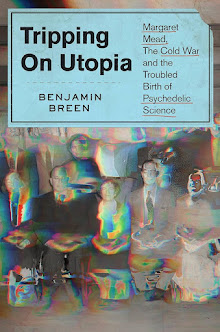A post today inspired by last week's post on early modern Japanese and Chinese depictions of Europeans. Thinking about that led me to look more closely at an image I've had filed away for awhile -- a remarkable example of sixteenth century Japanese Nanban ('Southern Barbarian') art depicting a group of Portuguese merchants at a Japanese port, apparently selling a small collection of exotic animals. Here is the image in full (or, at least, the most complete version of it I've found -- this is itself likely a detail from a larger painted screen):
Looking at the image more closely I realized that it could be cropped into detailed individual portraits. The result is a fascinating inversion of the early modern European ethnographic gaze -- one in which the Portuguese, rather than the Japanese, are depicted as exotic-looking foreigners. The palpable strangeness that Portuguese clothing and physiognomy held for the painter is evident from the remarkable level of detail throughout, and especially the close attention paid to the figures' outlandish apparel. |
| Could this be an African slave or Afro-Portuguese crioulo? |
(The role of animals -- some of New World origin -- in these images is another fascinating topic, one I plan to return to at a later date).
The Portuguese themselves, being, like other early modern Iberians, obsessed with limpieza de sangre, tended to depict themselves as exclusively Christian, European and, to use an anachronistic term, 'white.' Recent work on the Portuguese empire, however, is beginning to reveal a different picture. I've heard an estimate from one noted historian of slavery in the Lusophone world that up to one tenth of the population of Lisbon in the seventeenth century was of African origin, while another important recent work
It is difficult to speculate about the backgrounds of the diverse Portuguese traders pictured in these images, but the potential countries of origins of these figures (from Malaysia and India to Angola and Brazil) is a testament to the truly global character of the Portuguese empire, and to the new perspectives which an outsider's gaze can bring.
A. J. R. Russell-Woods' The Portuguese Empire, 1415-1808: a World on the Move
Finally, here's an example of Nanban cuisine -- a Japanese recipe that originated as a Spanish and Portuguese dish called escabeche (I have yet to try it myself, but it looks pretty good). Other culinary cross polinations abound: apparently we even have the Portuguese to thank for tempura.

.jpg)







7 comments:
Thanks Ben, someone finally looking at the possibility that someone other than Europeans can find something to be "exotic."
I feel like most of what I read completely ignores such possibility
Fascinating
I can't find the link to the "two books I've been reading on this subject, both excellent in different ways" Please provide it.
Dear Laura, the books I was speaking of are Russell-Woods' "The Portuguese Empire, 1415-1808: a World on the Move" and Daviken Studnicki-Gizbert's "A Nation Upon the Ocean Sea," which I had linked via the two Amazon boxes above. I've now added text links as well.
Thanks.
I remind my students when we study Edward Said that he said that *all* cultures view their others in exotic ways, and not just pre-modern Europeans. Edward Said has often been wrongly been charged with being critical of the West's representation of Islam, of accusing the West alone of being racist. His own position was more nuanced.
I found this when looking for representations of Europeans by non-Europeans in early stages of contact. I'm delighted you've started doing this. For another angle, here's a photo of a Nisga'a (Northwest North American Indigenous) carved mask depicting a white man: http://www.pag-ipg.com/fr/conferences/conference2008.pdf
If others know of wider collections of images and/or textual descriptions, please contact me at melissa.williams@utoronto.ca
i like you website it gave me some information for my history assignment
Post a Comment